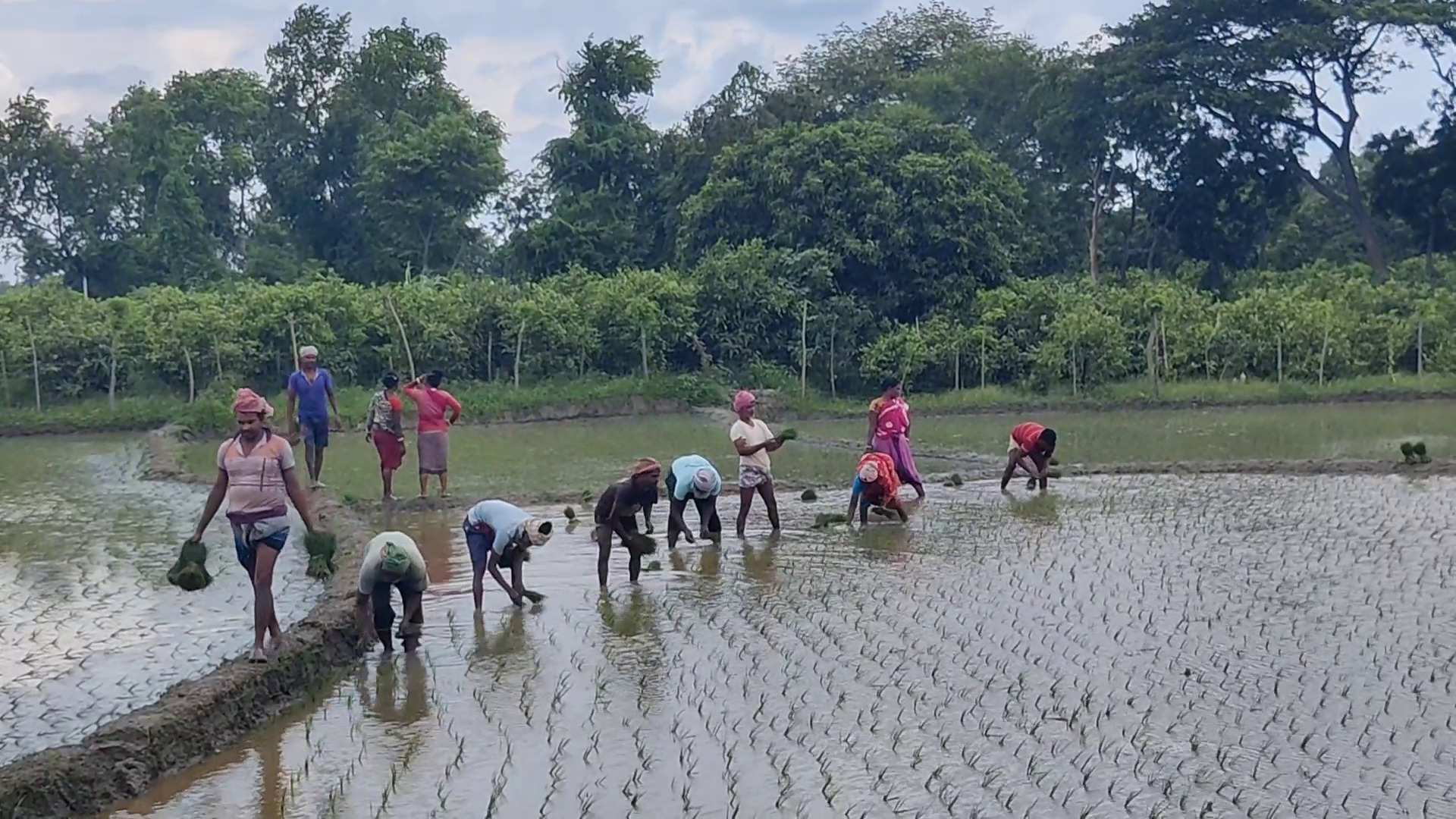
Published :
Updated :

Farmers across the north-western district of Chapainawabganj, also renowned for its mango production, are passing busy days with Aman paddy cultivation, as timely monsoon rains have signalled the start of the season.
From transplanting seedlings to preparing fields and repairing bunds, agricultural lands across the district are abuzz with activities.
Shah Lal Ali, a farmer from Baliyadanga village in Sadar upazila, said he is cultivating Aman paddy on 12 bighas of land and plans to plant on another six bighas soon.
“The rains arrived early this year, which has been good for farming. The initial abundance of rainwater meant there was no need for irrigation in the beginning, helping reduce costs. If the rainfall continues like this, irrigation expenses will largely reduce,” he said.
Akbar Ali, a farmer from Atahar area, echoed the sentiment. “Aman paddy must be planted during the rainy season. I’ve seen my forefathers rely solely on rainwater for this crop. In years without rain, we’ve had to depend on deep tube wells for irrigation. But this year, timely rains have allowed all the farmers to begin cultivation,” he said.
Akbar said he has already planted paddy on eight bighas of land and plans to cultivate another two bighas once the standing rainwater recedes from a low-lying field. “The market price of paddy is good right now, which has encouraged more people to grow rice this season,” Akbar added.
Meanwhile, Jahangir Hossain, another farmer in the area, expressed concern over rising costs. “The price of ploughing and labour has gone up. On top of that, we have to feed the workers and even provide cigarettes,” he said with frustration.
Calling farming the only way to survive, Jahangir said he has planted paddy on five and a half bighas so far and has another six bighas to go.
In Nezampur of Nachol upazila, farmer Serajul is also preparing his land for cultivation. “Timely rain has helped us a lot. I plan to cultivate three bighas this year. If we continue to get periodic rainfall, it will be a good season,” he said.
According to the Department of Agricultural Extension (DAE), the target for Aman paddy cultivation in the district this year has been set at 54,415 hectares.
This includes 10,695 hectares in Sadar, 22,400 in Nachol, 15,670 in Gomastapur, 5,050 in Bholahat, and 600 hectares in Shibganj upazila.
Agricultural officials and farmers expect that 193,144 metric tonnes of paddy will be produced from the cultivated land, helping meet local demand for rice.
Dr Yasin Ali, Deputy Director of the DAE, said farmers are planting both Ufshi (high-yielding) and hybrid varieties of Aman paddy.
“There is no shortage of fertilisers or seeds, and we are providing full technical support to the farmers,” he said, expressing optimism that the district will exceed its cultivation target this year.


 For all latest news, follow The Financial Express Google News channel.
For all latest news, follow The Financial Express Google News channel.